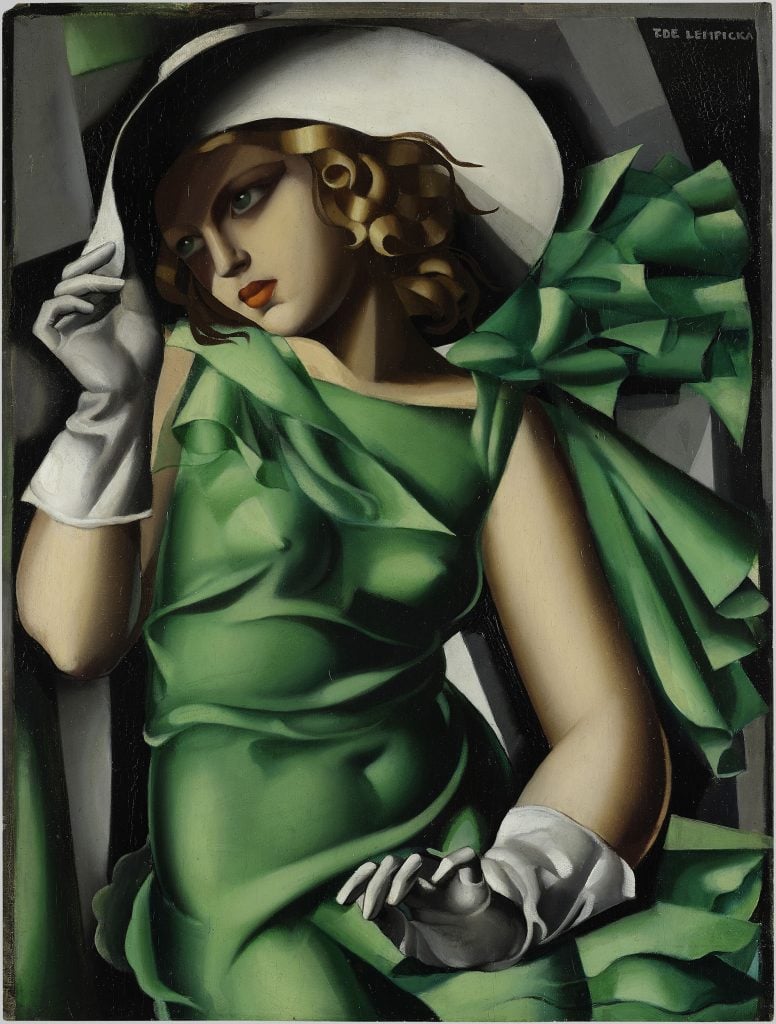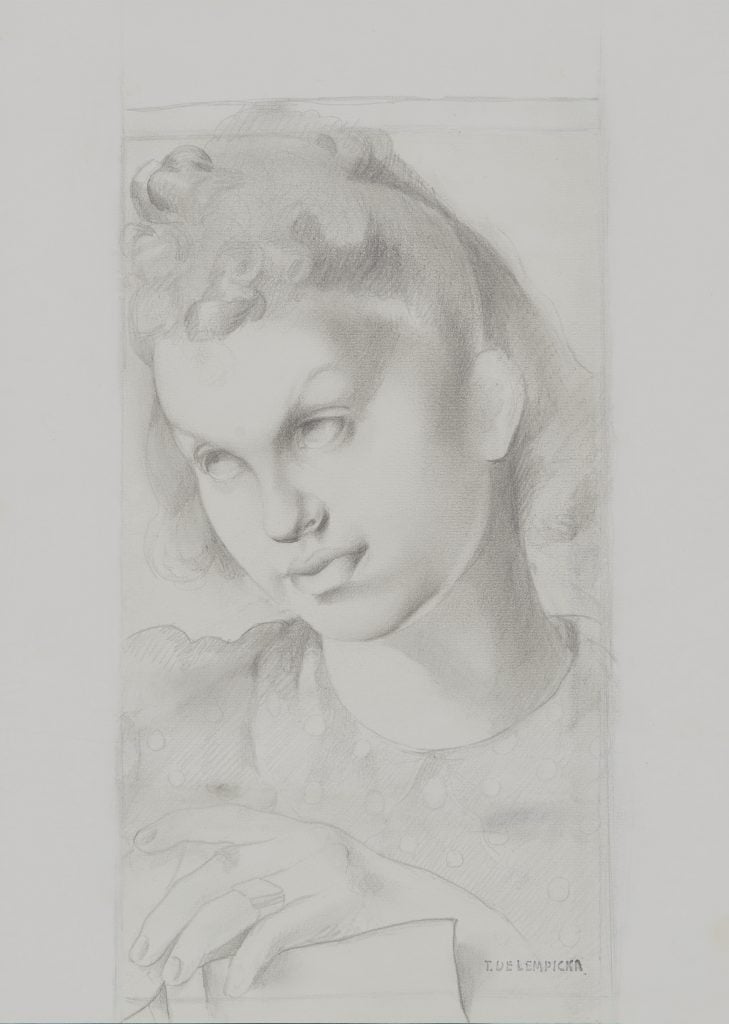Art & Exhibitions
Art Deco Star Tamara de Lempicka Is Finally Getting Her First Major U.S. Retrospective
This fall, San Francisco's de Young Museum will spotlight the creative life and legacy of the trailblazing artist.

For a trailblazing female artist and Art Deco star, beloved by celebrity collectors from Madonna to Barbra Streisand, Tamara de Lempicka has surprisingly not yet received a major retrospective in the United States. That is, until now.
This fall, the de Young Museum in San Francisco will open the first retrospective in North America to spotlight the creative life of the Polish artist. “Tamara de Lempicka” will bring together her ultramodern masterpieces (the Centre Pompidou, for one, is loaning its entire Lempicka collection), while exploring her lesser-seen design process and the complexities of her biography. Following its run in San Francisco, the show will travel to the Museum of Fine Arts Houston in the spring of 2025.
“The primary goal is to provide a more three-dimensional understanding of Lempicka,” curator Furio Rinaldi, who organized the show with Gioia Mori, told me over the phone. “We wanted to provide a unified portrait of this incredible artist in a more complex and layered way—and not just as a poster girl for Art Deco.”

Tamara de Lempicka, Jeune fille dessinant (ca. 1932). Fine Arts Museums of San Francisco, Museum purchase, Lisa Sardegna and David Carrillo, Phoebe Cowles and Robert Girard, and Achenbach Foundation for the Graphic Arts Endowment Fund, 2022.10. © 2023 Tamara de Lempicka Estate, LLC / ADAGP, Paris / ARS, NY.
The seed for the exhibition emerged three years ago, when the de Young Museum acquired a rare Lempicka drawing from 1932. A graphite sketch, it is a finely shaded portrait of Lempicka’s daughter Kizette that bears out the artist’s accomplished draftsmanship. For Rinaldi, it further offers a glimpse into her creative process, an aspect of that isn’t immediately apparent when viewing Lempicka’s polished, highly pictorial paintings.
“Drawing is the way she fine-tuned the figurative aspects of her compositions,” he said. “She always started everything on paper or by drawing directly on the canvas. It is essential to understanding her linear aesthetic.”
The show will be organized chronologically to capture the various identities that accompanied Lempicka’s evolution as a painter. On the surface are her names: when she first emerged in the Paris salons in the 1920s, the artist signed her works Łempitzky, using the male delineation of her (or really, her then-husband’s) last name. Her 1925 solo exhibition in Milan saw her switch to the moniker Lempitzka, revealing her female identity for the first time.
In 1933, when Lempicka wed Baron Kuffner, she took on the title of Baroness Kuffner. As Rinaldi pointed out, the artist’s thicket of collected names would bewilder even her close friend Françoise Gilot, who once recollected how Lempicka would confusingly call on her as Tamara one day and as the Baroness on another.
These were hardly Lempicka’s efforts to conceal her gender or self, but more so, reveal how she was comfortable in fluidity. She seduced and loved both men and women; she never stuck in one place for long, moving from Paris to New York City to Mexico. As she once declared: “I live life in the margins of society, and the rules of normal society don’t apply to those who live on the fringe.”

Tamara de Lempicka, Saint-Moritz (1929). Musée des Beaux-Arts d’Orléans, Gift of the artist, 1976, inv. 76. 121. © 2023 Tamara de Lempicka Estate, LLC / ADAGP, Paris / ARS, NY.
Lempicka’s many facets will inform the retrospective’s various chapters. “Russian Heritage” delves into the artist’s roots, while “Mannerism to Modernism” explores how the works of Old Masters and Renaissance painters animated her style. Her name-making paintings such as Young Woman in Green (1927–30) and Portrait of Ira P. (1930) are gathered in segments dedicated to “Society Portraits” and “the New Woman,” which also draw out Lempicka’s muses.
“Painting of female nudes has a long tradition of in art history,” Rinaldi said of Lempicka’s portraits of women. “But it rarely was depicted in such a powerful way by a woman. The paintings were done for Lempicka’s pleasure, from a woman’s point of view.”
Finally, a section called “Tamara in America” surveys her latter-day career. Lempicka moved to the U.S. in 1939, where, after World War II, her figurative style felt out of time and taste. She would venture into still lifes and abstraction, but after a disappointing showing at Iolas Gallery in New York in 1961, she never exhibited in public again.
Still, a century since she announced herself at the Milan show, Lempicka remains a potent figure. The de Young retrospective joins a forthcoming musical and documentary celebrating her richly layered life, just as the artist continues to hold sway at auction (her 1932 portrait of Marjorie Ferry set a record when it sold for $21.1 million in 2020) and in pop culture (Madonna’s current Celebration tour pays tribute to Lempicka throughout). It’s an enduring legacy befitting a woman who crafted herself in her own image.
“Lempicka was not the daughter of a famous artist. She was not the companion, lover, or wife of a famous artist. She never really recognized anyone as her teacher,” said Rinaldi. “She really saw herself as a work of art and her paintings are an expression of her life and her self.”
“Tamara de Lempicka” is on view at the de Young Museum, 50 Hagiwara Tea Garden Drive, San Francisco, from October 12, 2024 through February 9, 2025.





